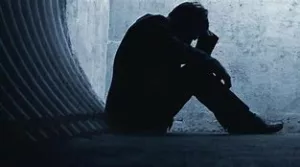What I Wish People Knew About Bipolar I Disorder
It’s not easy living with bipolar I, but it can be even more difficult when the people around you don’t understand your diagnosis. Here’s what I wish people knew about bipolar I
My life living with bipolar I started on cold November night. It was a few days before Thanksgiving in 2007. I had tried to take my life by overdosing on my sleeping medication, and I was in a lot of pain. For a year and a half before this event, I had been living with one of the worst depression cycles of my life. It took almost three years after my attempted suicide for my depression cycle to finally reach its end. When I was diagnosised with bipolar I in 2007, I didn’t want to believe that there was something wrong with me. It took me three years of getting lost in the darkest parts of my depression and three suicide attempts before I started to make positive changes in my life.
It’s not easy living with bipolar I, but here are some things I’ve learned throughout my struggle. If you also have bipolar I, you may want to consider sharing these points with your own friends and family to help them understand what you are dealing with.
Things I Wish People Knew about Bipolar I Disorder
My bipolar depression cycles are the worst parts of me
Depression cycles always feature the worst parts of my personality. I am the worst version of myself. Depression cycles can last for years—my longest lasting from 2006 to 2010. In that span, I tried to take my life three different times—2007, 2008, and 2010. After therapy and a more aggressive look at my depression and anxiety, I started to learn to limit my depression cycles to months, then weeks, and, now, just days. The last time I entered this cycle was Christmas week of 2017 and it lasted just four days. I haven’t had one since. Bipolar depression cycles might be the worst parts of me, but with time, I’ve learned how to control them and how to help myself with the help of a mental health professional
Bipolar depression is a war of the mind
Many people go through depression, and everyone experiences deep sadness at times, but bipolar depression is a war of the mind that people with bipolar I disorder will battle over the course of their lives. You fight battles with depression over the course of weeks, months, and even years but the war will always be there in your life. There will always be battles in my mind. It’s how you limit those battles that truly makes a difference.
Bipolar I forces you to live at the extremes
With bipolar depression and mania, you live with extreme mood swings. This is the major difference between bipolar I and bipolar II. I learned to cut back my cycles by learning how to recognize my triggers and how to respond to them. For instance, sometimes I wake up and don’t want to get out of bed for several consecutive days at a time. It’s the same with mania. My mania was often defined by racking up credit card debt and reckless behavior. My thoughts when manic were often running a million miles a minute in my head, and I could go days without sleep. The crash was always the hardest for me.
The less control you have, the more you will cycle between depression and mania
Depression and mania can happen in an instant with bipolar I. I have had moments of peace in my life, sometimes for weeks, before something changes in my life that leads to rapid cycling. I can be on top of the world one moment and unable to get out of bed, the next. My manic side never likes to sleep so when mania runs its course, it always cycles back to depression—my default setting.
Concerned about Bipolar Disorder?
Take our 2-minute Bipolar quiz to see if you may benefit from further diagnosis and treatment.
Bipolar I disorder is often accompanied by other illnesses
I never struggled with anxiety until my diagnosis of bipolar I. Since then I have had to deal with a diagnosis of generalized anxiety disorder and social anxiety, otherwise known as social phobia. Other issues that I have experienced due to my medication include major weight gain and weight loss at various stages of my life. Insomnia is a major factor that accompanies my daily struggles with bipolar I. I have also developed prediabetes.
Seasonal Affective Disorder (SAD) often co-occurs with bipolar disorder.
My official diagnosis is bipolar I with a seasonal component. What that means is my depression hits epic levels for during the months of November to March. As a result, I can be in a really bad depression cycle and it gets worse every year at the same time. I can feel the changes at the end of October as the season gets colder. As the temperature drops my depression increases and becomes a more prominent aspect of my daily life. In contrast, during the summer months, my depression is manageable, or even nonexistent.
Having bipolar I increases your risk of attempting suicide and inflicting self-harm
It is very easy to turn to self-harm when you live with bipolar I disorder. I turned to self-harm as a teen and in my early twenties to keep my suicidal thoughts at bay. It was easier to deal with physical pain than my emotional pain. When it still wasn’t enough I turned to suicide. I now advocate against suicide as a final option and want others living with bipolar I to know that suicide is never the answer. With the help of a mental health professional, you can start taking steps towards limiting your own depression cycles and finding healthy ways to cope with your symptoms.
You should ask questions and do your homework when your doctor prescribes you medication
Your medical team will look at what works for your bipolar I diagnosis but know that the side effects can be harsh. At the same time don’t be afraid to ask real questions. At the beginning of my diagnosis, I just took whatever my psychiatrist prescribed without knowing the long-term effects. Over the course of ten years, I have struggled mightily with my two important medications—Seroquel and Ativan. They both have harsh long-term issues as they are supposed to be used as short-term solutions.
Bipolar I doesn’t have to define you
It is true, bipolar I disorder is for life, but that doesn’t mean that it should define your every waking moment. I will always have the extreme depression cycles and the extreme mania episodes, but learning how to manage and continuously work on your mental health can change your outlook on life entirely. It is not a shameful thing to have a mental illness, and the sooner you realize that truth, the sooner you can move forward.
I thought when I was diagnosed with bipolar I disorder that my life had ended. For the three years that followed my mind was marred by extreme levels of depression. I could barely live with it. It took my last suicide attempt for me to wake up and finally accept help. The mistake I made was not believing that there was something seriously wrong with me. Even in the years after I accepted help, I still struggled. I finally started to get my life together in 2014, and I am close to finishing my bachelor’s degree. I have worked through my struggles by writing my blog, my memoir, and a couple of screenplays.
The one thing I want people to take away from my experience is to avoid making the mistakes I did by turning to suicide and refusing to recognize that I needed help.
Get help. Believe in that help. Don’t hold back because resistance to the process will only make recovery harder. Recovery is possible, just not complete recovery. If you have bipolar I, you will have it for life, but you can learn to manage the extremes by using all the resources that you get your hands on. Never stop fighting. It’s always worth it.







